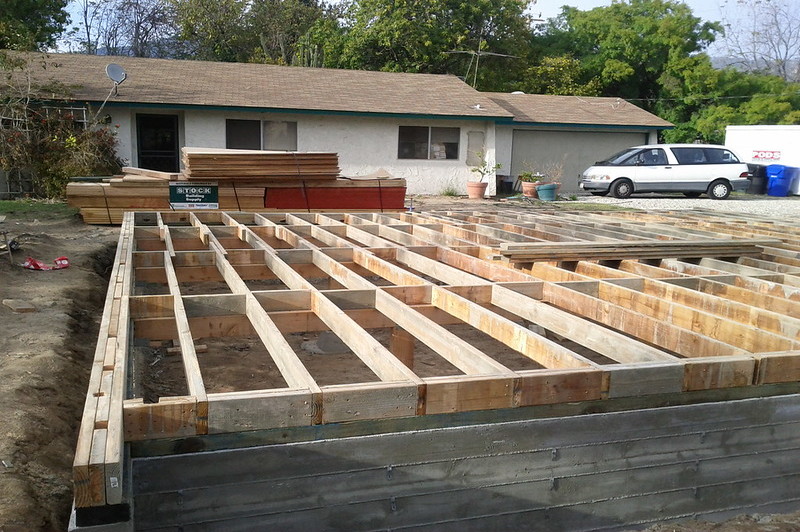Do you know it’s typical to find mold in a basement? You might be wondering how to get rid of mold on floor joists when you see it lurking in your spaces.
Mold can also occur in the presence of dampness if the air has a suitable amount of moisture. Water vapor from the dirt or concrete is a common way to get into a crawl space.

Moist climates encourage mold growth, which can appear in various areas in your property, especially your floor joists. Basement spaces and cellars both have the potential to experience this problem.
Mold in joists can grow to such a size and severity if not addressed immediately. If you want to eliminate all spores, the best thing is to stop them as soon as they appear. To do this, follow these simple procedures.
What Causes Mold Growth On Floor Joists?
Wood is a porous building material, and that’s what makes most floor joists. Moisture can quickly infiltrate into the fabric, resulting in structural deterioration.
Moisture damage is the catalyst for the growth of mold. To learn more about mold growth, check out how to identify black mold. Excessive moisture, which is frequent in basements because of inadequate air circulation, is also one of several wetness causes.
The thought of trying to keep mold from growing on the floor joists and in your basement can be a bit challenging. Basements, more than any other part of the house, tend to accumulate moisture. Here’s another guide on how to get rid of mold in the basement.
When it does happen, it’s usually white. Untreated soil in a crawlspace, especially in rainy regions, is a breeding ground for mold.
Keep an eye out for mold or mildew growing between the floor joists in your crawl space. As well as causing additional problems, mold and mildew can also cause diseases and illnesses. As spores out from crawl space make their way into the floor area, they cause breathing problems and foul odors, affecting well-being.
How Do I Get Rid Of Mold On Floor Joists?
You’ve probably realized that cleaning mold out of a building is a physically demanding task. As a result, energy and, most critically, you need time to finish the job.
The removal process, on the other hand, is potentially hazardous to your health. As a result, you will require protective gear and other cleaning materials.
Step #1. Check the area
When it comes to mold removal, the first step is to conduct an assessment of the problem. Install a lighting system in the area to determine the degree of mold growth on the floor joists.
You can use an extension cord to adjust the brightness of the light. Controlling and isolating the affected area can be accomplished by hanging plastic sheets over doorways and blocking airflow pipework that leads to other uninfected portions of the home.
Step #2. Mix solution
Mix one part white vinegar or pure bleach with ten parts water in a plastic container to make a solution sprayed on surfaces. Remember that if you plan to use bleach, you should get a bottle that will let you fill the solution without splashing it, as bleach has the potential to damage clothing and other possessions. Use a protective mask while working with bleach, and if the workspace has any openings, uncover them to ensure adequate ventilation.
Step #3. Spray the solution
As previously said, there are several multiple kinds of anti-mold remedies commercially available. Purchase one and administer it to the diseased area according to the manufacturer’s recommendations. The vast majority of them are accessible in spray bottle form.
Don’t use a strong stream of water to get the job done. You may end up spreading mold spores on your cloth as a result of this procedure.
Spray the damaged area from a fixed distance of one inch to ensure that the solution is more effective. To be highly cautious, put on your safety glasses.
Step #4. Wipe it down
A towel or absorbent towel works well for wiping down the sprayed area. However, you must ensure that the wiping material is free of contaminants.
Once you clean the new site, apply a fresh layer of wax or acrylic sealant to them. Use a plastic bag to store the rag after you use it to clean an area. After that, toss the bags in the trash.
Mold is a persistent fungus that will reappear if left untreated. To eliminate mold growth on floor joists in crawl spaces, you must carry out this procedure constantly for three days.
After 24 hours, spray the solution over the surface and sweep it clean. Maintain the usage of fresh rags regularly.
Step #5. Scrub it off
Lastly, thoroughly scrub the residue. First, check if the area is dry.
However, you must be patient as this phase takes time. Remove all mold remnants.
Conclusion
After following the steps on how to get rid of mold on floor joists, please seek the assistance of a professional for this job if you face difficulty.
